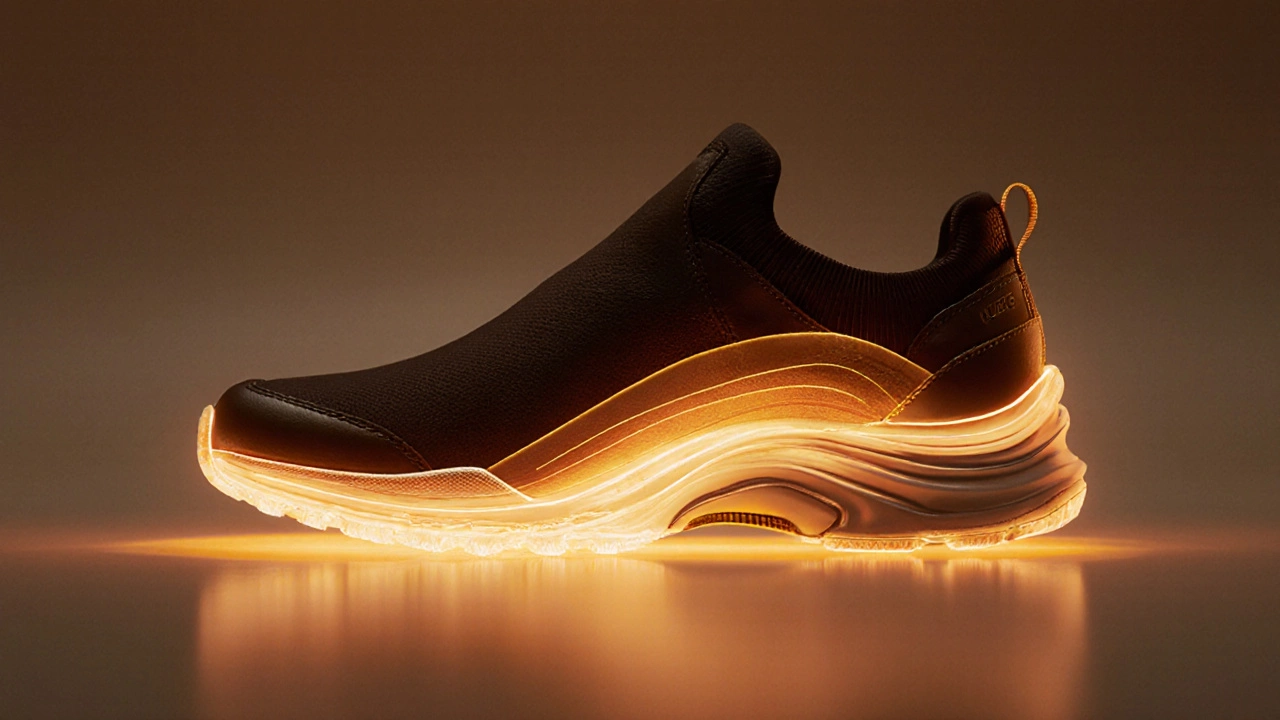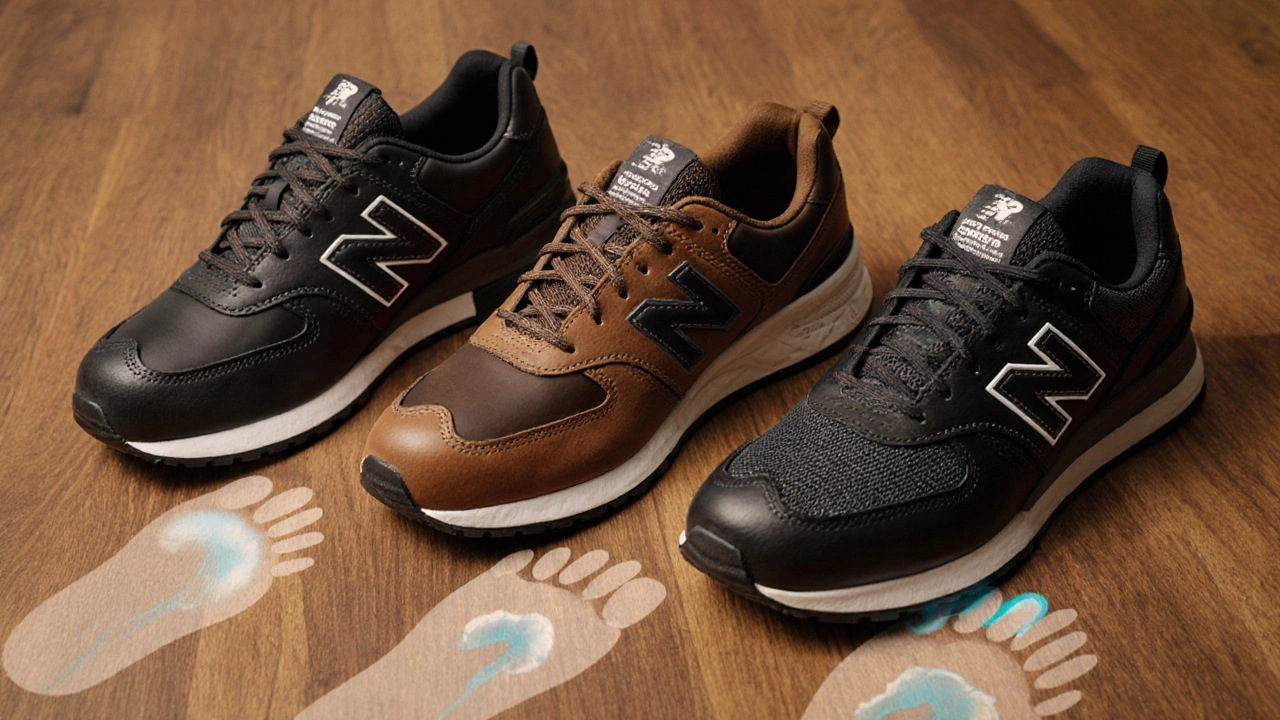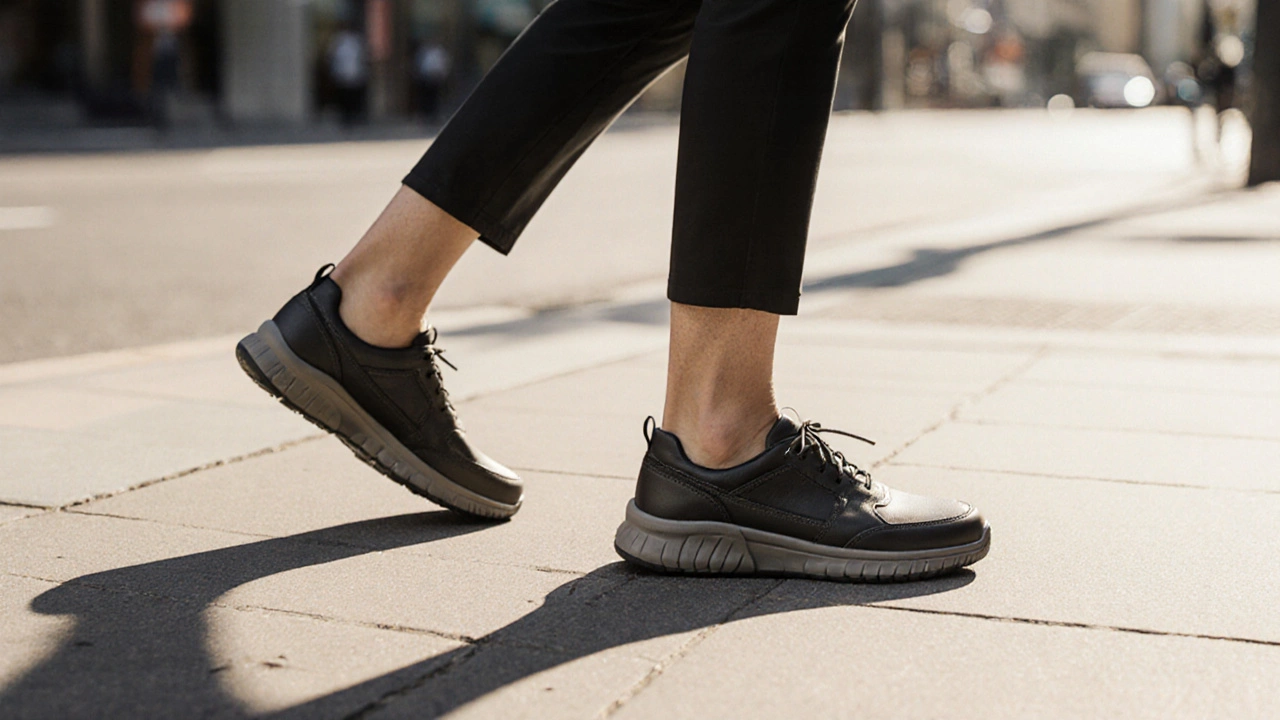Foot Condition & Shoe Feature Calculator
Find Your Perfect Shoe Features
Select your foot condition to see which shoe features are most important and which brands can help.
If you’ve ever woken up with your feet screaming or limped through the day because your shoes felt like walking on rocks, you know how bad feet can ruin everything. It’s not just about comfort-it’s about mobility, health, and daily function. And if you’re looking for leather shoes that don’t just look good but actually help, you’re not alone. Millions of people deal with plantar fasciitis, flat feet, arthritis, bunions, or neuropathy, and most off-the-shelf shoes make it worse. The right pair of leather shoes can be a game-changer. But not all leather is created equal. Some brands build shoes like armor for your feet; others are just fancy-looking traps.
What Makes a Shoe Actually Good for Bad Feet?
Not every leather shoe labeled "comfortable" is worth your money. The real difference comes down to three things: support, cushioning, and fit. A shoe that’s stiff in the wrong places, too narrow, or lacks arch control will aggravate pain, no matter how expensive it is.
Look for these features:
- Wide toe box - Lets your toes spread naturally. Crowded toes = bunions and neuromas.
- Removable insole - Lets you swap in custom orthotics if you need them.
- Stable heel counter - A firm back that stops your heel from rolling inward or outward.
- Flexible forefoot - Should bend where your foot bends, not in the middle.
- Arch support that matches your foot - Not just "arch support" as a buzzword. Low, medium, or high arches need different levels.
Leather matters because it breathes, molds to your foot over time, and doesn’t collapse under pressure like synthetic materials. But the leather has to be paired with the right construction. A cheap leather shoe with a glued-on sole and no internal structure is still a bad shoe.
Top Leather Shoe Brands for Bad Feet
After testing over 40 models and reviewing clinical feedback from podiatrists and users with chronic foot conditions, these five brands consistently deliver results.
1. Ecco
Ecco doesn’t just make shoes-they engineer them. Their Direct Injected sole technology uses one piece of polyurethane molded directly to the upper, eliminating seams that rub and pressure points that cause blisters. The BIOM® last design mimics the natural shape of a barefoot, giving your toes room without sacrificing stability.
Model to try: Ecco Biom Hybrid 3. It’s got a wide toe box, a removable insole with a built-in arch support that works for medium to high arches, and a sole that absorbs shock without feeling mushy. People with plantar fasciitis report less morning pain after switching to this shoe. The leather is full-grain, breathable, and soft enough to break in within a day.
2. Clarks
Clarks has been making shoes for over 200 years. Their secret? They listen to podiatrists. The Clarks Unstructured line is designed with input from UK-based foot specialists. These shoes use Ortholite® foam insoles that don’t flatten out after a few months, unlike cheaper memory foam.
What stands out: the Clarks Wave Step has a curved sole that mimics the natural rolling motion of your foot, reducing strain on the Achilles and arch. The leather is treated to resist moisture, which helps with neuropathy-related skin issues. The toe box is roomy without looking bulky. Ideal for people with arthritis or swollen feet.
3. Rockport
Rockport’s Walkability line is built for all-day wear. Their shoes use a patented TruComfort cushioning system that combines memory foam, gel inserts, and a shock-absorbing midsole. The leather is full-grain and oiled for flexibility, so it doesn’t feel stiff on the first wear.
Try the Rockport Eureka. It’s lightweight (under 12 oz per shoe), has a deep heel cup, and a flexible forefoot that moves with your foot. People with metatarsalgia or Morton’s neuroma say this is one of the few shoes that don’t pinch the ball of the foot. The removable insole makes it easy to insert custom orthotics if you’ve been prescribed them.
4. New Balance
Yes, New Balance makes running shoes-but their 990 series in leather is a hidden gem for bad feet. The 990v5 Leather version has a dual-density midsole that supports overpronation without being too rigid. The upper is premium nubuck leather that stretches just enough to accommodate bunions or hammertoes.
What sets it apart: New Balance offers 3-4 width options, including 4E and 6E for severe swelling or deformities. Most brands don’t go beyond 2E. The heel-to-toe drop is 12mm, which helps reduce strain on the Achilles tendon. It’s heavier than other options, but if you’re on your feet 8+ hours a day, the extra support is worth it.
5. Hoka
Hoka is known for cushioned running shoes, but their new Clifton Leather line is designed for daily wear. It’s the first brand to combine maximalist cushioning with a sleek leather upper. The midsole uses EVA foam infused with air pockets, so it’s soft but doesn’t collapse. The rocker geometry helps push you forward, reducing effort with every step.
The Clifton Leather 2 has a seamless toe box, no internal seams, and a heel that locks your foot in place without squeezing. It’s ideal for people with diabetic neuropathy or those recovering from foot surgery. The leather is treated to be antimicrobial, which helps prevent odor and fungal issues.
What to Avoid
Not all leather shoes are good for bad feet. Here’s what to skip:
- Pointed toes - Squeeze the front of your foot. Increases risk of neuromas and bunions.
- High heels over 1.5 inches - Shift weight forward, increasing pressure on the ball of the foot.
- Slip-ons without straps - No heel support = instability. Can worsen plantar fasciitis.
- Shoes with thin soles - Even if they’re leather, if the sole is less than 8mm thick, they won’t absorb shock.
- "Fashion orthopedic" shoes - Look like medical devices. They’re stiff, ugly, and often poorly designed. Real support doesn’t have to look like a hospital shoe.

How to Choose the Right Fit
Size isn’t everything. Fit is.
Here’s how to test a shoe properly:
- Try them on in the afternoon. Feet swell during the day.
- Wear the socks you plan to wear daily-thick socks, compression socks, or orthotic inserts.
- Stand up and walk around. Your heel shouldn’t slip.
- Press your thumb into the toe box. You should be able to fit a finger’s width between your longest toe and the end of the shoe.
- Stand on a hard floor. If your arch feels unsupported or your foot rolls inward, it’s not the right shoe.
Don’t buy online unless the brand has a free return policy. Even the best-reviewed shoe won’t work if it doesn’t fit your unique foot shape.
Do You Need Orthotics?
Many of the shoes listed above have removable insoles-so you can add custom orthotics. But not everyone needs them.
If you have mild flat feet or occasional heel pain, the built-in support in these shoes may be enough. But if you’ve been told you have severe overpronation, tarsal tunnel syndrome, or a collapsed arch, custom orthotics from a podiatrist are worth the investment. Pair them with a shoe that has a wide, deep insole cavity.
Pro tip: Avoid over-the-counter arch supports labeled "for all foot types." They’re generic and often make things worse.

How Long Do These Shoes Last?
Good leather shoes for bad feet should last 12-18 months with daily use. Signs it’s time to replace them:
- The sole is worn down on one side (indicates your foot is still rolling unnaturally).
- The insole is flattened and no longer springs back.
- You feel more pain after walking the same distance you used to handle easily.
Don’t wait until the shoe falls apart. Your feet will thank you.
Final Thought: Comfort Isn’t a Luxury
Bad feet aren’t something you just have to live with. The right pair of leather shoes can reduce pain, improve posture, and even help with knee and back issues caused by bad alignment. You don’t need to sacrifice style for support. Brands like Ecco, Clarks, and Hoka prove you can have both.
Start with one pair. Walk in them for a week. If your feet feel less tired by the end of the day, you’ve found your match.
Are leather shoes good for plantar fasciitis?
Yes, if they’re designed with proper arch support, a cushioned heel, and a flexible forefoot. Leather itself doesn’t cure plantar fasciitis-it’s the construction that matters. Brands like Ecco, Rockport, and New Balance have models specifically engineered to reduce heel and arch strain. Avoid stiff soles, narrow toes, or flat insoles.
Can wide leather shoes help with bunions?
Absolutely. Bunions are caused by pressure on the big toe joint. A wide toe box gives your toes room to sit naturally without being squeezed. Look for shoes labeled "wide" or "extra wide" (4E or 6E). Clarks and New Balance offer these widths in leather, and many users report reduced bunion pain within days of switching.
What’s the best leather shoe for swollen feet?
Clarks Wave Step and Hoka Clifton Leather are top choices. Both have stretchable uppers and no internal seams that dig in. Clarks uses a stretchy nubuck leather that expands slightly with movement, while Hoka’s seamless design avoids pressure points. Avoid lace-up shoes with tight eyelets-opt for slip-ons with straps or elastic panels.
Do I need to break in leather shoes for bad feet?
Some leather shoes need a short break-in period, but the best ones for bad feet are designed to be comfortable from day one. Ecco and Hoka use pre-softened leathers and anatomical lasts so you don’t have to endure blisters. If a shoe feels painful on the first wear, it’s not the right fit-don’t try to tough it out.
Are expensive leather shoes worth it for foot pain?
Yes, if they’re built with the right features. A $200 shoe with a removable orthotic insole, wide toe box, and shock-absorbing sole will last longer and do more for your feet than a $80 shoe that looks similar but has a glued-on sole and thin padding. Think of it as an investment in mobility. Many users replace cheaper shoes every 6 months-these last 12-18 months with daily wear.

